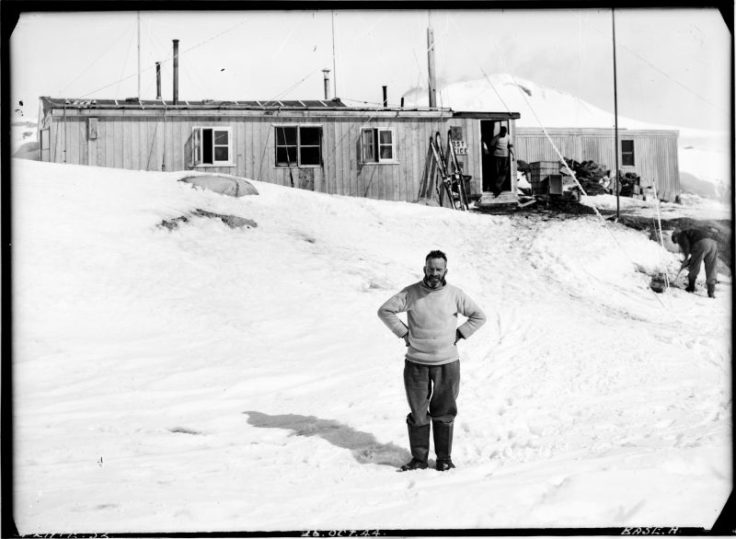On 3rd February 1944 the HMS Scoresby and SS Fitzroy arrived at Deception Island, site of the first base to be established by Operation Tabarin. Base B, consisting of disused whaling station buildings, was occupied by five winterers of the expedition. Having unloaded stores for Base B the ships sailed on the 11th for Hope Bay where a second base was planned. However poor sea ice conditions led to the selection of an alternate site for Base A at Port Lockroy on Goudier Island.
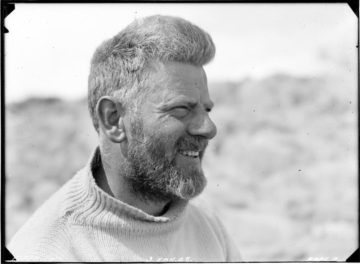
Geologist and base leader at Deception Island William Flett recalled how the old whaling station was converted for use by the 1944/1945 wintering party:
“Immediately after landing it was thought advisable to settle the problem of accommodation for the party without delay. Two of the dormitories, erected by the former lessees of the Whaling Station, and both of which were in remarkably good state of repair, were surveyed [and the dormitory with the best view of the bay selected].
This building consists of two main portions separated by a large kitchen. A commodious loft or attic runs the full length of the house. A cellar to which access may be obtained from either the kitchen or from a pathway outside extends from the West end of the house to the kitchen.
On the East side of the kitchen there is a large dining-hall and on the other side of the kitchen there are two small messrooms and a suite of ten bedrooms symmetrically disposed about the main corridor.
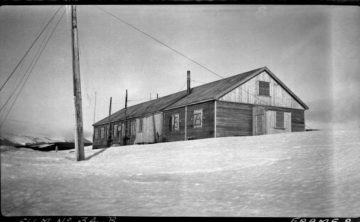
The South messroom was retained in its previous capacity but the North messroom after serving as a double bedroom ultimately became the combined library and workshop. Of the ten bedrooms three became combined office and bedrooms, for Magistrate [Flett], Meteorological Officer [Howkins] and Radio Officer [Layther], whilst a fourth was used as a double bedroom. The remaining rooms were used as stores, workshops and repositories for useful salvaged material.
Before proceeding with alterations to the house, it was considered expedient to establish the identity of the building and its inhabitants for the benefit of casual visitors.
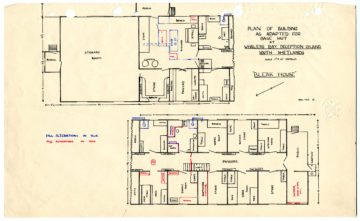
So, on the 7th February, a white table-top was converted into a signboard, on which was stencilled the British Imperial monogram and the words Port Foster Post Office. Its claim to be the farthest South Post Office was quickly outmoded by the establishment of a Post Office, at Port Lockroy, by the Base “A” Party. […]
The Base was singularly fortunate in having a large amount of salvage material and members of the party exercised their skill and ingenuity in several ways in contriving small additions to the furnishings of the house and Base equipment – a form of occupational recreation which has much to recommend it.”
Read William Flett’s full report here.
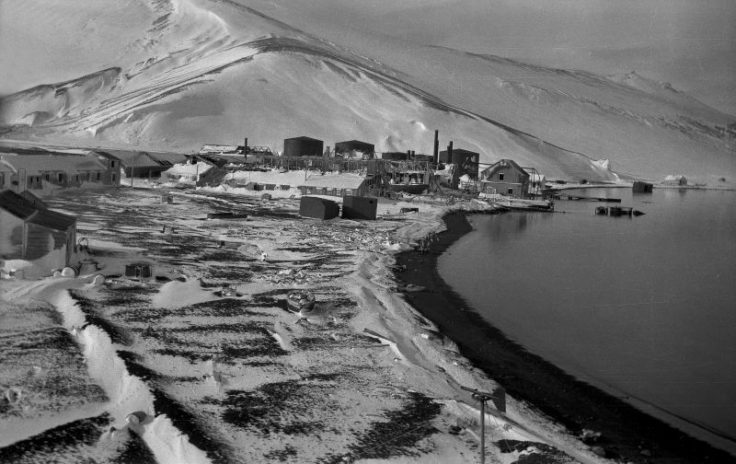
After landing stores and personnel at Deception Island the Scoresby and Fitzroy proceeded to Hope Bay, planning to establish a second base there. Victor Marchesi, captain of the Scoresby, recalls:
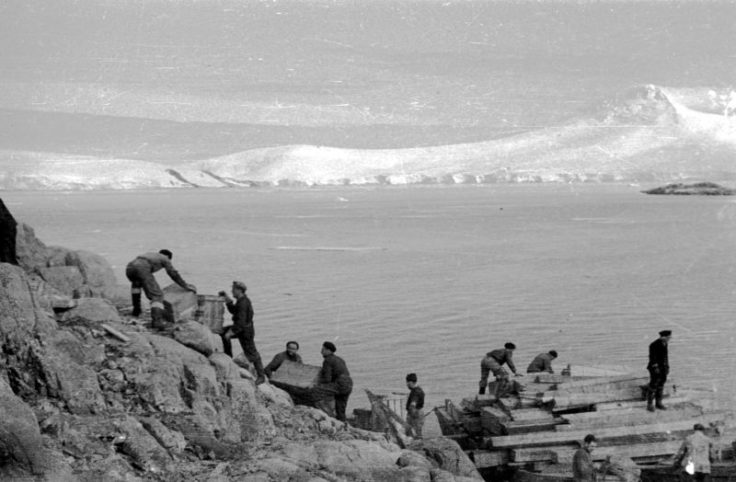
Film: Unloading stores at Port Lockroy, Feb 1944. (Archives ref: AD6/16/1946/5)
Establishing Base A at Port Lockroy proved a very different experience from moving into the whaling station on Deception Island according to Tabarin’s medical officer, Eric Back:
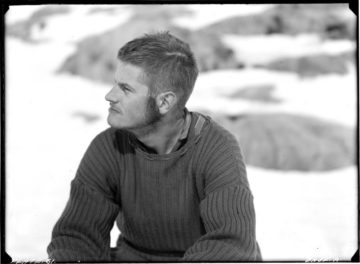
Tabarin’s commander, James Marr reported with pride on his team’s building efforts in his report to the Governor:
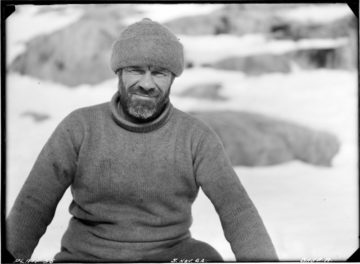
“This building, for it can hardly be described as a hut, had been named Bransfield House. It is strong and commodious and is possibly a more elaborate building than has hitherto been erected in Antarctica – at any rate by a British expedition. Of the whole structure only the…workroom, together with the kitchen, is the original Boulton and Paul hut we brought with us from England. The remainder, comprising mess room, cabins, store room, scullery and the rest, was put together from a motley collection of materials- corrugated iron, timber and lining paper from Deception, heavy beams dating from the whaling days dug up out of the ice on Wiencke Island, the woodwork and beaver board of the second Nissen hut which was not erected, packing cases and junk of every description, the whole eked out with a quantity of timber, sisalkraft and aluminium foil supplied as good measure by Boulton and Paul along with the original hut.
We are indebted this fine residence to the energy, genius and craftsmanship of Lewis Ashton, the carpenter, who in a hundred other ways has proven himself to be a most valuable member of the expedition.”
Read James Marr’s full report here.
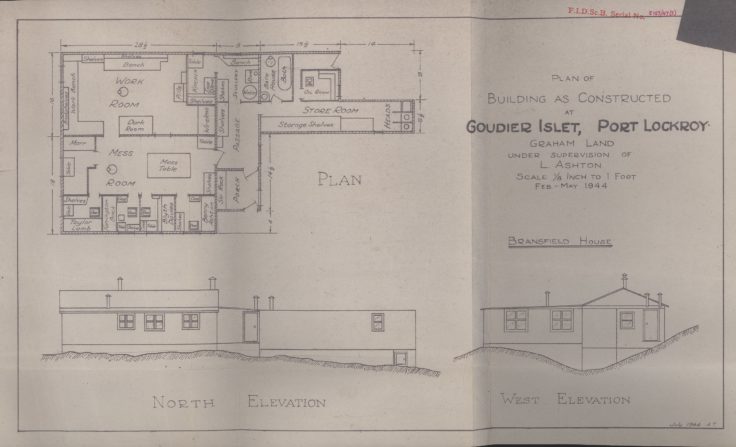
For the full story of the building of Bransfield House read the construction report by surveyor Andrew Taylor here.
Film: Building the hut at Port Lockroy, Feb 1944. (Archives ref: AD6/16/1946/5)
